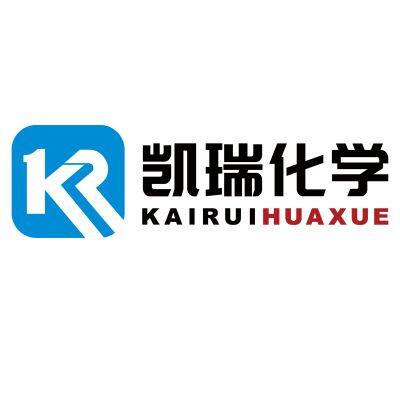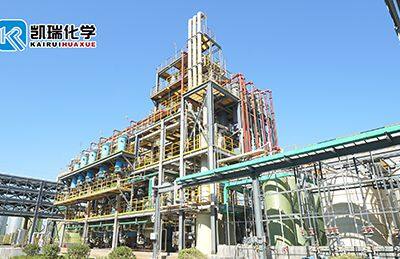Home > Products > Phosphonates Antiscalants, Corrosion Inhibitors and Chelating Agents > What is Cooling Water Corrosion Inhibitor?
What is Cooling Water Corrosion Inhibitor?
- QINGDAO
- T/T L/C D/P D/A Credit Card PayPal Cash Escrow Other
You May Like
-
The Difference Between the Usage of Antiscalant ATMP and HEDP
-
HEDP Manufacturers/HEDP Introduction/CAS 2809-21-4
-
What is the Scale Inhibition Effect of PBTC?
-
What is the Role of CAS No. of ATMP•Na5?
-
What Safety Precautions Should be Observed When Handling HEDP?
-
What Are the Advantages of Antiscalant ATMP?
Product Details
| Brand Name | Shandong Kairui Chemistry Co.,Ltd. | Type | Adsorbent | |
| Usage | Coating Auxiliary Agents, Electronics Chemicals, Leather Auxiliary Agents, Paper Chemicals, Petroleum Additives, Plastic Auxiliary Agents, Rubber Auxiliary Agents, Surfactants, Textile Auxiliary Agents, Water Treatment Chemicals | Adsorbent Variety | Activated Carbon |
Product Description
A cooling water corrosion inhibitor is a chemical compound or a blend of compounds designed to protect metal surfaces in cooling water systems from corrosion. Corrosion can cause significant damage to cooling systems, leading to equipment failure, increased maintenance costs, and decreased efficiency. Cooling water corrosion inhibitors work by forming a protective layer on metal surfaces, which prevents or slows down the electrochemical reactions that cause corrosion.
Types of Cooling Water Corrosion InhibitorsAnodic Inhibitors
Mechanism: Form a protective oxide film on the anodic areas of the metal surface.
Common Compounds: Chromates, nitrites, and molybdates.
Cathodic Inhibitors
Mechanism: Reduce the cathodic reaction, often by precipitating as a film on the cathodic areas.
Common Compounds: Zinc salts, phosphates, and polyphosphates.
Mixed Inhibitors
Mechanism: Provide protection by forming films on both anodic and cathodic areas.
Common Compounds: Phosphonates, silicates, and certain organic inhibitors.
Film-Forming Inhibitors
Mechanism: Adsorb onto the metal surface to form a protective barrier film that inhibits both anodic and cathodic reactions.
Common Compounds: Organic amines, imidazolines, and quaternary ammonium compounds.
Formation of Protective Film
Action: The inhibitor forms a thin, stable film on the metal surface, preventing contact between the metal and corrosive agents like oxygen, water, and salts.
pH Control
Action: Some inhibitors help maintain the pH of the cooling water within an optimal range, reducing the rate of corrosive reactions.
Passivation
Action: Inhibitors can facilitate the formation of a passive oxide layer on the metal surface, which acts as a barrier to further corrosion.
Scale and Deposit Control
Action: Many corrosion inhibitors also function as scale inhibitors, preventing the deposition of minerals that can lead to under-deposit corrosion.
Oxygen Scavenging
Action: Certain inhibitors can remove dissolved oxygen from the water, which is a key contributor to corrosion.
Industrial Cooling Towers: To protect metallic components such as pipes, heat exchangers, and cooling tower basins from corrosion.
Chilled Water Systems: Used in HVAC systems to ensure longevity and efficiency.
Heat Exchangers: Prevents corrosion in heat exchangers used in various industries, including power plants, chemical processing, and manufacturing.
Water Chemistry: The composition of the cooling water, including pH, hardness, and the presence of other ions.
System Metallurgy: The types of metals and alloys present in the cooling system.
Operating Conditions: Temperature, flow rate, and pressure within the cooling system.
Environmental Regulations: Compliance with local and international regulations regarding the use of certain chemicals.
Cooling water corrosion inhibitors are essential for maintaining the integrity and efficiency of cooling water systems. They protect metal surfaces by forming protective films, controlling pH, passivating surfaces, preventing scale and deposits, and scavenging oxygen. The choice of inhibitor depends on the specific conditions and requirements of the cooling system.
Contact Us

- Shandong Kairui Chemistry Co., Ltd.
Product Categories
New Products
-
What Are the Central Boiler Rust Inhibitors?
-
Application Fields of N-oxide, Pentapotassium Salt of Amino Trimethylene Phosphonic Acid (ATMP-N-Oxide)
-
The Role of Disodium Salt of 1-Hydroxy Ethylidene-1,1-Diphosphonic Acid (HEDP·Na2)
-
The Role of Benzotriazole Corrosion Inhibitor
-
What Are Oxygen Scavengers in Food Packaging Used For?
-
What is the Usage Content of HEDP Cleaning Agent?
-
What Water Treatment Agents Are Needed in Daily Chemicals?
-
The Role of Antiscalant for ro Plants
-
Amino Trimethylene Phosphonic Acid ATMP Precautions in Daily Chemicals
-
What Are the Water Treatment Agents Commonly Used in the Daily Chemical Industry?
-
How to Use Chelating Agents
-
The Role of Volatile Corrosion Inhibitor Chemicals
Popular Searches
- food additive
- water treatment
- concrete admixture
- concrete additive
- rust inhibitor
- sodium gluconate
- superplasticizer
- water reducing agent
- hedp
- retarder
- scale inhibitor
- gluconic acid
- anti-rust oil
- retarder admixture
- acid corrosion inhibitor
- additive corrosion inhibitor
- chemical scale corrosion inhibitor
- water treatment corrosion inhibitor
- water treatment scale corrosion inhibitor
- chemical dosing system
- water treatment agent
- water treatment chemical
- granular urea
- industrial water treatment
- scale inhibitor
- boiler water treatment
- liquid cooling
- chemical scale corrosion inhibitor
- cooling tower water treatment
- corrosion inhibitor
Recommended Products
- High-Quality RDP: Anti-Caking and Reliable Alternative to Vinnapas 5010N
- HIFULL Hydrophobic Fumed Silicon Dioxide Nanoparticles HB-202N Sio2 Fumed Silica Powder Manufacturer Price
- HIFULL High Purity HB-701 Dental Composite Resins Nanoscale Hydrophobic Fumed Silica Powder Super Fine Silicon Dioxide Coating
- HIFULL Hydrophilic Fumed Alumina for Lithium Battery Separator Nano Grade Fumed Aluminum Oxide Granules Aluna-100
- HIFULL Nano Grade Hydrophilic Anatase Rutile Mixed Crystal Structure Tio2 NT-50 P25 Hydrophilic Fumed Titanium Dioxide
- HIFULL Industrial Grade Hydrophobic Fumed Silica Powder HB-615 Fine Nanoparticle Pyrogenic Silica Liquid Coating Factory Price
- HIFULL Industrial Grade HMDS Treated Hydrophobic Fumed Silica HB-612 Nano Silicon Dioxide Powder White Carbon Coating Rubber
- HIFULL HL-450 Amorphous Hydrophilic Fumed Silica Sio2 Nano Particles Silicon Dioxide Reinforcing Filler Powder Coating
- Hot Sale Hydrophilic Fumed Silica HL-150 Nano Silicon Dioxide Thickening Epoxy Resin With BOM/One-stop Service
- HIFULL HTV LSR Reinforcing Filler Nanoscale White Carbon Black Hydrophilic Silica (Pyrogenic Silicon Dioxide) Hydrophilic Powder
- HIFULL HL-90 Nano Silica Amorphous Colloidal Silicon Dioxide Powder Fumed Silica Nanoparticles for Rubber Synthesis
- HIFULL Hydrophilic Fumed Silica Powder Nanoscale Food Grade Oxide Free Flow Aid FA35 White Carbon Black Silica Dioxide Particles
Find Similar Products By Category
- Chemicals > Chemical Auxiliary & Catalyst > Chemical Auxiliary
- Please Enter your Email Address
- Please enter the content for your inquiry.
We will find the most reliable suppliers for you according to your description.
Send Now-
 sales
Hi there! Welcome to my shop. Let me know if you have any questions.
sales
Hi there! Welcome to my shop. Let me know if you have any questions.
Your message has exceeded the limit.

- Contact supplier for lowest price
- Customized Request
- Request Sample
- Request Free Catalogs
Your message has exceeded the limit.
-
Purchase Quantity
-
*Sourcing Details
Your inquiry content must be between 10 to 5000 characters.
-
*Email
Please enter Your valid email address.
-
Mobile



